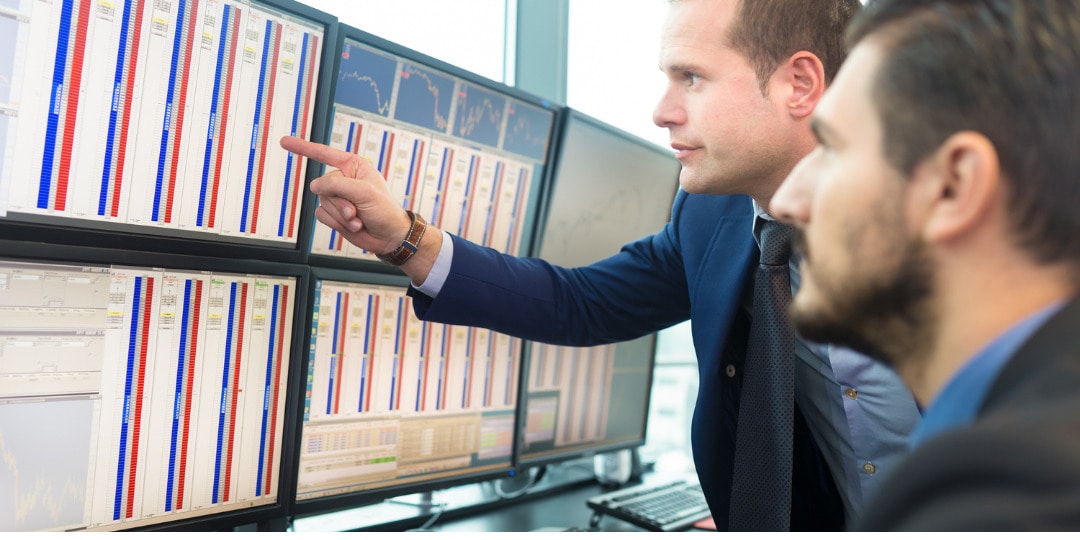Markets and the Price Mechanism
Perhaps the most powerful engine ever discovered is the market with the most powerful invention being the price mechanism.
Markets have been around since the dawn of civilisation. It may well have heralded civilisation.
In the early stages, trade would occur based on barter and as a result the average well-being of the bartering participants increased with more needs and wants satisfied leading to specialisation which was a driver of prosperity and human progress.
Placing a value on things in terms of other things may be the most powerful piece of technology ever discovered. Ahead even of the invention of the wheel.
Whereas the market was a discovery, the advent of the price mechanism that arrived with the rise of currency is an extremely powerful human invention. At the core of this invention is the notion of money.
What is Money
Money is what money does. These include anything that performs the function of money including being:
• A medium of exchange
• A measure of value
• A unit of account
A particularly important role for the purpose of this discussion is that it is a store of value.
This gave it the ability to add a temporal dimension to our economic activity where resources are not only shifted across location but across time. It also gave rise to the financial industry whose existence rests on the basis that a dollar today is worth more than a dollar in the future.
New markets were created where the amount that a future dollar should be discounted so that it can be traded with today’s dollars were established.
The Discount Rate
The discount rate has become embedded into every transaction we undertake whether the parties undertaking the transaction are aware of it or not. They are used not only in the money markets of the world where currencies are transacted.
The markets where these discount rates are formed are now among the biggest markets ever developed with ramifications that have had to be navigated ever since they were established.
While there may be a lot of talk in contemporary popular discussions about how they have caused no end of distortion and perversion of society it is hard to argue that we should go back to the days where usury was forbidden. When that was the case our lives were brutish and short. No wonder it was called the dark ages.
What Does this Mean for us Now
A way of thinking about the discount rate is to apply a simple formula. It goes as follows:
Discount rate = Risk Free Rate + Required rate of return
The Risk Free Rate
The period of history that we have basically been forced to endure since the global financial crisis of 2008 is characterised by the drift of the risk-free rate to zero.
Terms like ZIRP, which is short for Zero Interest Rate Policy were then superseded by QE which is short for Quantitative Easing. This occurred when interest rates fell to zero and monetary policy was supplemented by huge increases in the money supply. It is what happens when an economy is in a liquidity trap.
This monetary landscape came about because in the early days of the post Lehman Brothers world it was left to monetary policy to do the heavy lifting in setting our economies back on a sustainable footing with only a small role reserved for fiscal policy.
While the pandemic has caused governments to overcome the deep-rooted reticence of employing fiscal policy as an aid in combatting deflationary pressures, it is the earlier financial crisis that caused the risk-free rate to be zero.
There is nowhere to place funds where there is no risk that will still earn a return.
The required rate of return
The required rate of return is best seen in terms of the return required to prompt an investor to purchase certain assets.
It is different although related to the hurdle rate of return which is the parameter that is analysed when investing. There is a difference between being an investor and investing. The former play in a marketplace of established income streams and participate in the transactions of those streams. Investing is the creation of new income streams through the application of all the factors of production.
You could say that investors look for a required rate of return in deciding where to park their funds whereas investing requires assessing investment options against a hurdle rate of return in deciding where to employ them.
Advanced economies around the world are going through bubbles in many of their asset markets. It has occurred in residential property prices, share markets, collectibles, commodities and derivatives like cryptocurrencies. Tthe investors in those assets have received extraordinarily high rates of return.
Those undertaking active investing who are unable to find investments that can conceivably generate returns that compete with the returns of passive investments. The hurdle rate is elevated at times of rapidly rising asset prices as we have now.
Investments like businesses that require active participation whether they are purchased as already established or newly created do not sell for the high multiples of income that the passive assets attract. Not yet at least.
We have become mired in a period of low productivity speculation. As a result the economic pie is distorted. It is not growing materially on a per capita basis in GDP terms and a concentration is occurring of wealth so that the disparity between the haves and have nots is growing.
Where To From Here
One of the consequences is that banks have become a distorting influence in the allocation of capital favouring the passive recycling of durable consumption items (residential property) and the scarcity value of the land they occupy and securitised financial assets rhather than funding active investing.
If a young person wishes to get on a ladder of opportunity, they may have to go down a different route to the one earlier generations of Australians embarked upon. The business route and perhaps the creation of a trademark that embodies an underlying productive enterprise.
The starvation of capital in the creation and transacting of businesses will need to be overcome using different approaches as Vendor financing of which earn outs are an important category. Although these methods of finance have been around for a very long time they can play a far greater role in Australia than they currently do.
A further point is that bubbles eventually bust. No one can predict when and how. It will then be even more urgent that productive investing takes place. This is likely to occur since the hurdle rates will fall along with the rates of return that has been enjoyed by the passive class of assets.
It was always thus with the pendulum swinging between bouts or irrational exuberance and thrift. Those that are prepared and have used this season of plenty to replenish reserves will be the best placed to take advantage of productive opportunities that will eventually reveal themselves.
Is Your Business Ready for Sale
In the meantime, if you are a business owner it pays to do a bit of preparation for when discount rates change and their prices adjust.
Do you operate a transparent business?
Are your financials up to date and can you provide timely data on the profitability of your business?
Are your processes and methods located in any place other than your own head?
Does the business rely on your continued presence?
Have you thought about how you would provide as seamless a transition as possible to a new owner?Are you prepared to provide a measure of vendor financing to help a buyer take ownership of your business?
Are you willing to back yourself if an earn out opportunity is offered?
These are the opportunities that quite often yield the highest prices for a business.
The world economy has backed itself into a peculiar situation where demand that was suppressed through lockdowns is now bouncing back. Inflation rates that have been kept under control for a very long time may be making an increase. Governments that were reluctant to spend money directly are now in fiscal overdrive. Productivity that has been in the doldrums for the last decade has to bounce back if we are to maintain a grip on our debt obligations.
In Australia, our reliance on China as a major customer for a narrow base of commodities has left us exposed. Our focus on small business to lift us and the lack of investment needed to turn the best of them into big businesses is a drag on our prosperity.
All of these things are reflected in discount rates which can change radically and quickly along with sentiment and which could herald the introduction of a business renaissance in Australia as attention is turned back on being productive. The Australian Diaspora who include the best and brightest that travel overseas for experience and ideas will be coming back to our shores to put what they have learned into practice.








